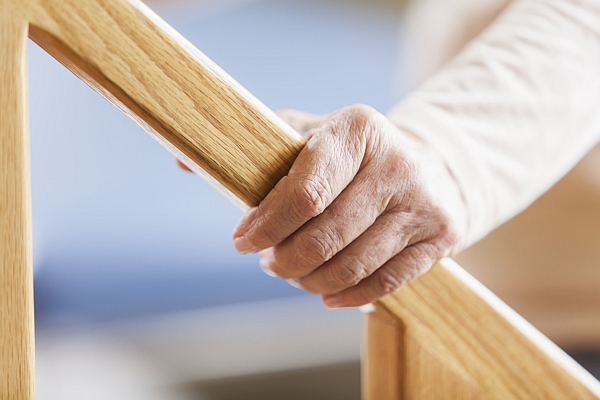Climbing stairs safer, how do you do that?
The Dutch staircase in the house is often steep, narrow and therefore less easy to walk on, how is that possible? The origin lies in the fact that the pre-war houses are often small and most of the stairs in the hall are at the entrance, this is also often a small space. A staircase that is easy to walk on is often called ‘a lazy one’. Here the steps are very deep so that you can easily put your entire foot on the step. For such a lazy staircase you need much more m2 space, which was not available in the older houses, so the stair maker made a steeper staircase that used less m2 surface.
Fortunately, in the Netherlands we have seen increasingly better stairs that can be walked on in recent years. Regulations by the Building Decree have become stricter, so that the stairs must also meet certain conditions. More steps have been added to the stairs from 13 to 15 and the hall spaces have also been significantly enlarged. This allows the stairs to be made larger, which improves safety. However, there are many houses in the Netherlands where the stairs still have 13 narrow steps, making the stairs less accessible.
Do you also have such a staircase in your house and climbing stairs is becoming increasingly difficult, then there are various aids and with a number of practical tips it will become a lot safer.
Make sure the stairs are empty
To start with, it is important that the stairs are empty, so do not put any laundry, shoes or toys on the stairs.
Step by step
If you have difficulty walking because you have had surgery, or if your muscles become stiffer, take a little more time for climbing stairs and always put both legs on a step, this takes a little more time, but is a lot safer. Make sure there is a good wall railing, preferably on both sides.
If necessary, walk backwards down the stairs.
If the steps are so shallow that you can only put down half a foot, it is better to walk backwards down the stairs, a lot of falls come from walking down the stairs.
Place a round wall railing.
If a railing on the wall is missing, make sure that a railing is mounted on at least 1 side of the stairs. It is even better to install a handrail on both sides of the stairs. If you have a stair pivot on the inside of your stairs, you can also mount a vertical bracket here. This gives a lot of extra support, especially at the top of the stairs.
Handrail grip tape
If you start to lose the strength in your hands, you can also provide the banister with a non-slip tape, which you then apply locally, preferably on a round banister with a maximum diameter of 38 mm. You can also buy a bicycle handlebar tape for this that your local uncle wraps around the round railing.
Led stair step lighting
Provide a well-lit staircase, a good view of the stair step is very important, nowadays you have all kinds of LED lighting that you can mount on the sides of the stairs, these LED lights work on a battery and turn on when movement , but there are also many options for electricity. Make sure that the top and bottom steps in particular have sufficient light.
Durable non-slip stair strip
Make sure your steps are non-slip, do you have a varnished or painted staircase, or a natural stone staircase, these can be very slippery, especially if you walk down the stairs with socks. Provide the steps with a strong and durable anti-slip stair strip, these are available in 2 versions, the model which is clamped in a groove and the model and the version with a self-adhesive layer. Definitely worth reading The easy stepper a handy aid when climbing stairs
Frequently read blogs:
- Painting your stairs as a renovating project
- Create an industrial look for your stairs
- Paint your stairs in a concrete look
Blog writer: Dennis for Anti-sliprubbertape.com










Comments
Login to give reaction Your comment will be posted as soon as it is approved.